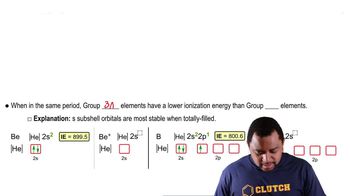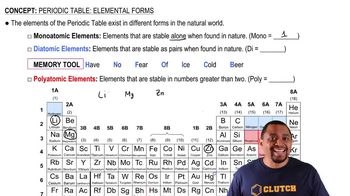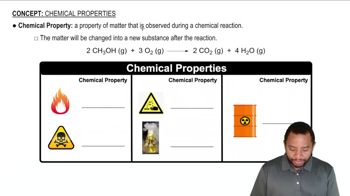Textbook Question
Complete and balance the equation for each of the following reactions.
b. Ca(s) + H2O(l) →
 Verified step by step guidance
Verified step by step guidance



Complete and balance the equation for each of the following reactions.
b. Ca(s) + H2O(l) →
Complete and balance the equation for each of the following reactions.
d.
Compare some of the physical properties of H2S, NaH, and PdHx.
List three ways in which the properties of boron differ from those of the other group 3A elements.
Explain why the properties of boron differ so markedly from the properties of the other group 3A elements.
Describe the structure of diborane (B2H6) and explain why the bridging B–H bonds are longer than the terminal B–H bonds.